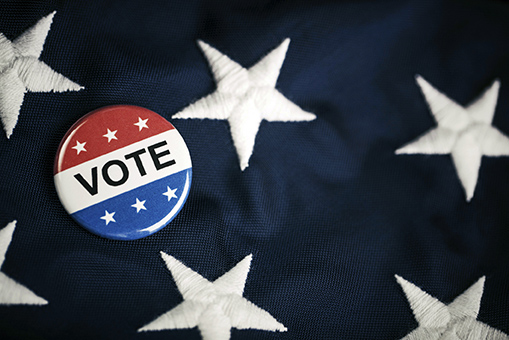
It’s that time of the year again: inboxes full of unsolicited requests for donations, people with clipboards approaching as you try to squeeze in a grocery run between work and your child’s soccer game, strangers knocking on your door to discuss an issue or a candidate. Election time is here and yes, hospitalists, we must be ready to vote.
Besides being any citizen’s duty, voting is an important way to get involved and have a say in public affairs. Individuals may feel their vote will not change an election’s outcome. However, there have been several instances in our recent history where a surprisingly small number of votes–537 votes in Florida in 2000, less than 1% of the vote in Wisconsin, Michigan, and Pennsylvania in 2016, and in Wisconsin, Michigan, Arizona, and Georgia in 2020–changed the course of an election.
In state and local elections, sometimes even a single vote can make all the difference.1 Although these campaigns typically don’t get the same exhaustive coverage as federal elections, they usually have the greatest effect on us, our families, and our patients. Public health, reproductive health, licensing, insurance, business organization, employers’, and employees’ relations, non-compete clauses, malpractice, taxes, education curriculum, zoning, drilling, and mining are all governed in whole or part by state and local laws and regulations.
These considerations are even more applicable with midterm elections, where turnout is expected to be lower. Therefore, each individual vote may play an even bigger role.
As hospitalists, our particular voice and especially our vote is important. The COVID-19 pandemic and its effects on our patients and practices, and the ongoing debates over health care, health insurance, and public health have all highlighted the importance of our voices. We are an integral part of a sector that makes up over 17% of the U.S. gross domestic product and therefore has a significant political impact.2 We are also central to the single most expensive part of health care spending, hospital care.3
Hospitalists are perfectly positioned to shape policies and rulemaking with a direct impact on this critical component of the U.S. economy. Failure to do so will result in hospitalists succumbing to rules made by special interest groups, which may not necessarily serve or benefit us or our patients. Indeed, some rules already put in place with little to no physician input have led to lower job satisfaction and increased burnout. It’s up to us to push our voices to the forefront. Organizations like SHM have placed a focus on advocacy for hospitalists through the Public Policy Committee and have helped aggregate and amplify our voices, especially at the national level. For that influence to continue and grow we must, as individuals, remain active participants in the discourse, including at the state and local levels.
There are more than one million licensed physicians in the United States. Historically physicians voted at a lower rate than other groups.4 While that research is decades old, and newer data indicates physicians voted near or above the levels of the general population in the most recent elections, hundreds of thousands of us are still not voting.5,6 It is perplexing that a group used to devising and implementing measures to avoid even a single sepsis fallout or hospital-acquired infection would be content with a less than perfect record on election participation.
Getting from wanting to vote to actually voting requires registering to vote, education on the issues, and effectively casting that ballot. Physicians have cited time as a major barrier preventing them from voting or even registering to vote.7 Hospitalists work long hours, and we are often so focused on trying to balance our patient-care responsibilities with other life responsibilities that we may fail to complete essential tasks like voting. Fortunately, there are tools and strategies to help us accomplish these steps despite our busy schedules.
Register to vote. The deadline to register to vote varies by state and is usually at least a few weeks to a month prior to election day. In most states registration can be done online and takes just minutes. Some states even allow same-day registration on election day. In other states, additional procedures such as notarization of the registration form or “in-person only” registration may be required. Check www.usa.gov/voting or your state’s secretary of state’s website for your specific state’s process.
Educate yourself. The number of issues and the plethora of candidates on the usual ballot may seem overwhelming. How are we supposed to know which person to choose for judge of the municipal court, justice of the peace, or transportation-district board member? Fortunately, there are reliable resources that process such information in a more user-friendly format. Start with your state’s voter information guide and secretary of state’s website or go to www.usa.gov/voter-research which aggregates this information. Then look to organizations you trust that can help you understand and distinguish the issues and candidates, such as local political parties, civic or professional organizations, media organizations, faith groups, or interest groups.
Make a plan to vote. Do it before election day if possible. As hospitalists, our workday often starts before the polls open, and an unexpected event can keep us at the hospital long after the polls close. Fortunately, all but four states have an option for early voting, such as early in-person voting or voting by mail. Three of the remaining states allow those required to work during polling hours on election day to register as absentee voters. Connecticut has no early voting and does not allow absentee voting based on work requirements. Those voting in Connecticut may want to get to the polls when they open at 6 a.m., ahead of their workday.
Get involved. The more you are involved in the political process, the more you can influence the issues that matter to you and your family, to hospital medicine, and to our patients. Sure, financial contributions to candidates or organizations supporting issues that matter to you are easier for a busy hospitalist to do. More importantly, volunteer your time, especially at the state and local levels. Get involved in an organization that advocates for issues that matter to you, write postcards to voters, canvass for a candidate or ballot measure, talk to your local and/or state representatives, attend a town hall, or even run for office.
Elections have consequences, and hospitalists’ voices and votes are important. Moreover, we need to be heard. We have a unique understanding of the intricacies of our health care system and the impact of laws, rulemaking, and regulations on us, our families, our patients, and our communities. Get involved and create positive change. Let’s go vote!

Dr. Folefack

Dr. Almli
Dr. Folefack is a hospitalist and regional medical director with Envision Healthcare in Dallas and an adjunct assistant professor of medicine at the University of North Texas Health Science Center in Fort Worth, Texas. Dr. Almli is a nocturnist hospitalist in Los Angeles, California. Both are members of SHM’s Public Policy Committee.
References
- Montanaro D. Why Every vote matters–the elections decided by a single vote (or a little more). National Public Radio website. www.npr.org/2018/11/03/663709392 Published November 3, 2018. Accessed September 12, 2022.
- NHE Fact Sheet. Centers for Medicare & Medicaid Services website. https://www.cms.gov/Research-Statistics-Data-and-Systems/Statistics-Trends-and-Reports/NationalHealthExpendData/NHE-Fact-Sheet. Modified 08/12/2022. Accessed September 12, 2022.
- Sisko AM, et al. National health expenditure projections, 2018-27: Economic and demographic trends drive spending and enrollment growth. Health Aff (Millwood). 2019;38(3):491-501.
- Grande D, et al. Do doctors vote? J Gen Intern Med. 2007;22(5):585-9. doi:10.1007/s11606-007-0105-8.
- Ahmed A, et al. Analysis of reported voting behaviors of US physicians, 2000-2020. JAMA Netw Open. 2022;5(1):e2142527. doi:10.1001/jamanetworkopen.2021.42527.
- Lalani HS, et al. Trends in physician voting practices in California, New York, and Texas, 2006-2018. JAMA Intern Med. 2021;181(3):383-385. doi:10.1001/jamainternmed.2020.6887.
- Lalani HS, et al. Barriers to voting in 2020 among resident physicians. J Gen Intern Med. 2021;36(1):254-255. doi:10.1007/s11606-020-06308-w.